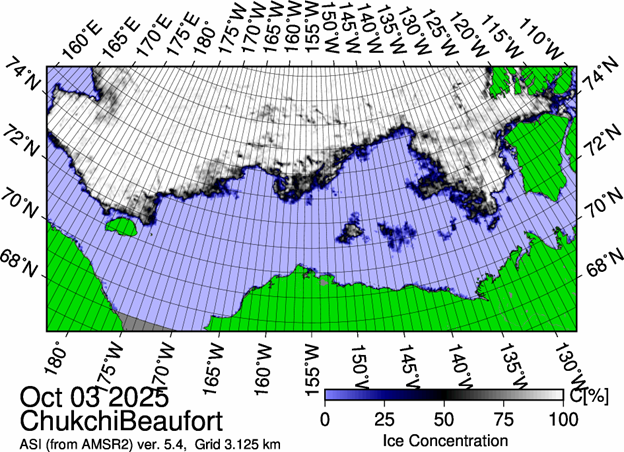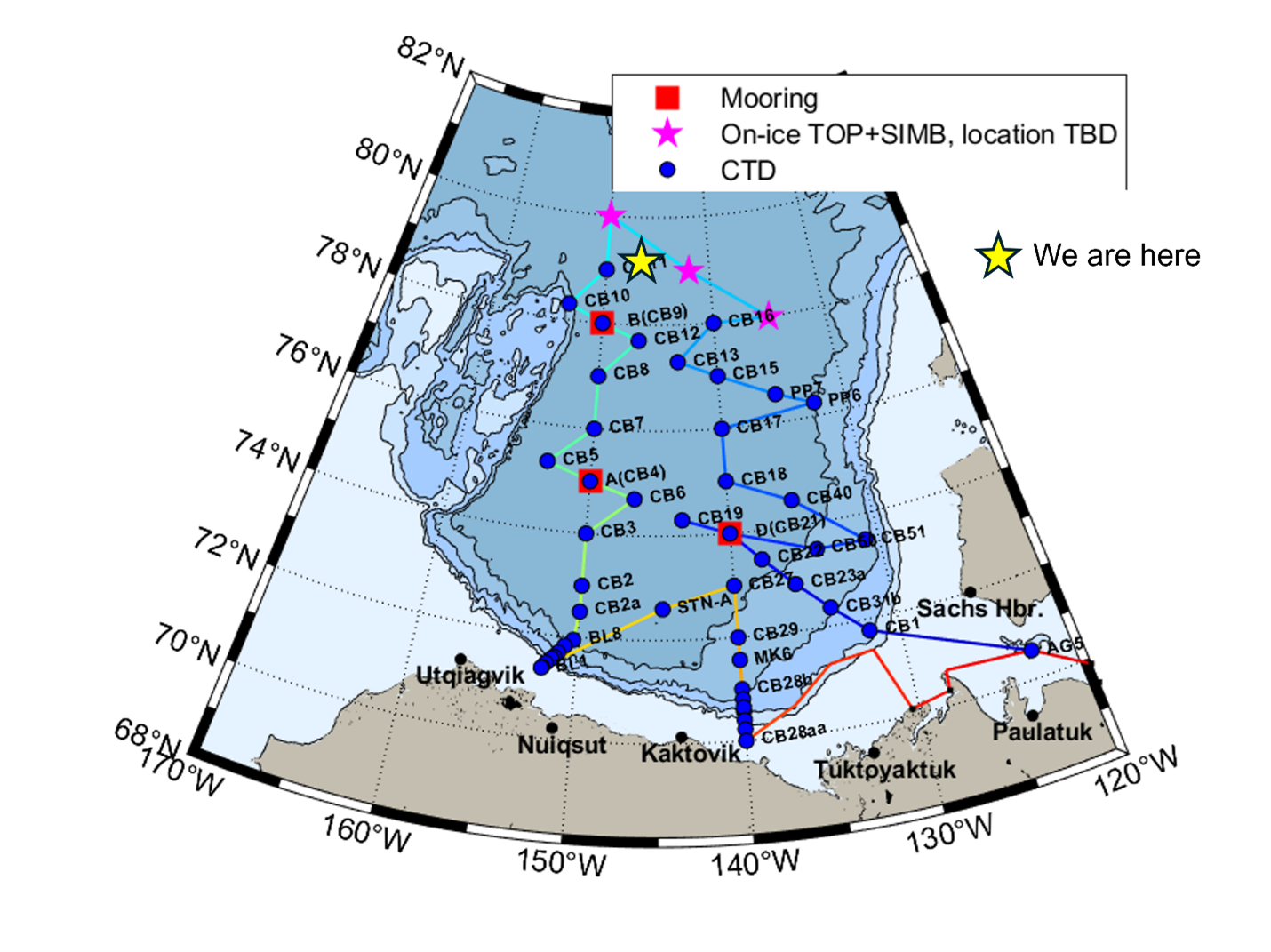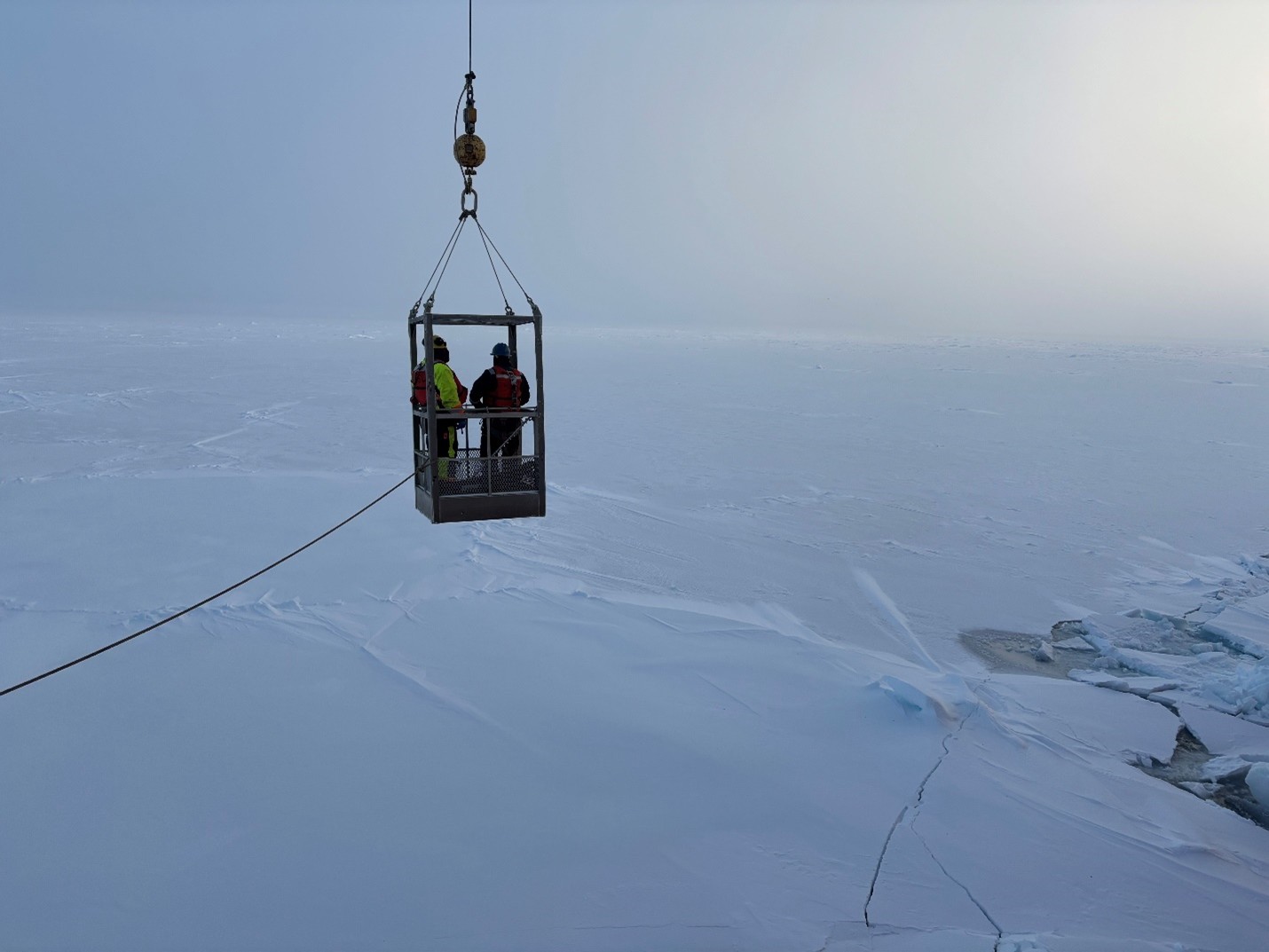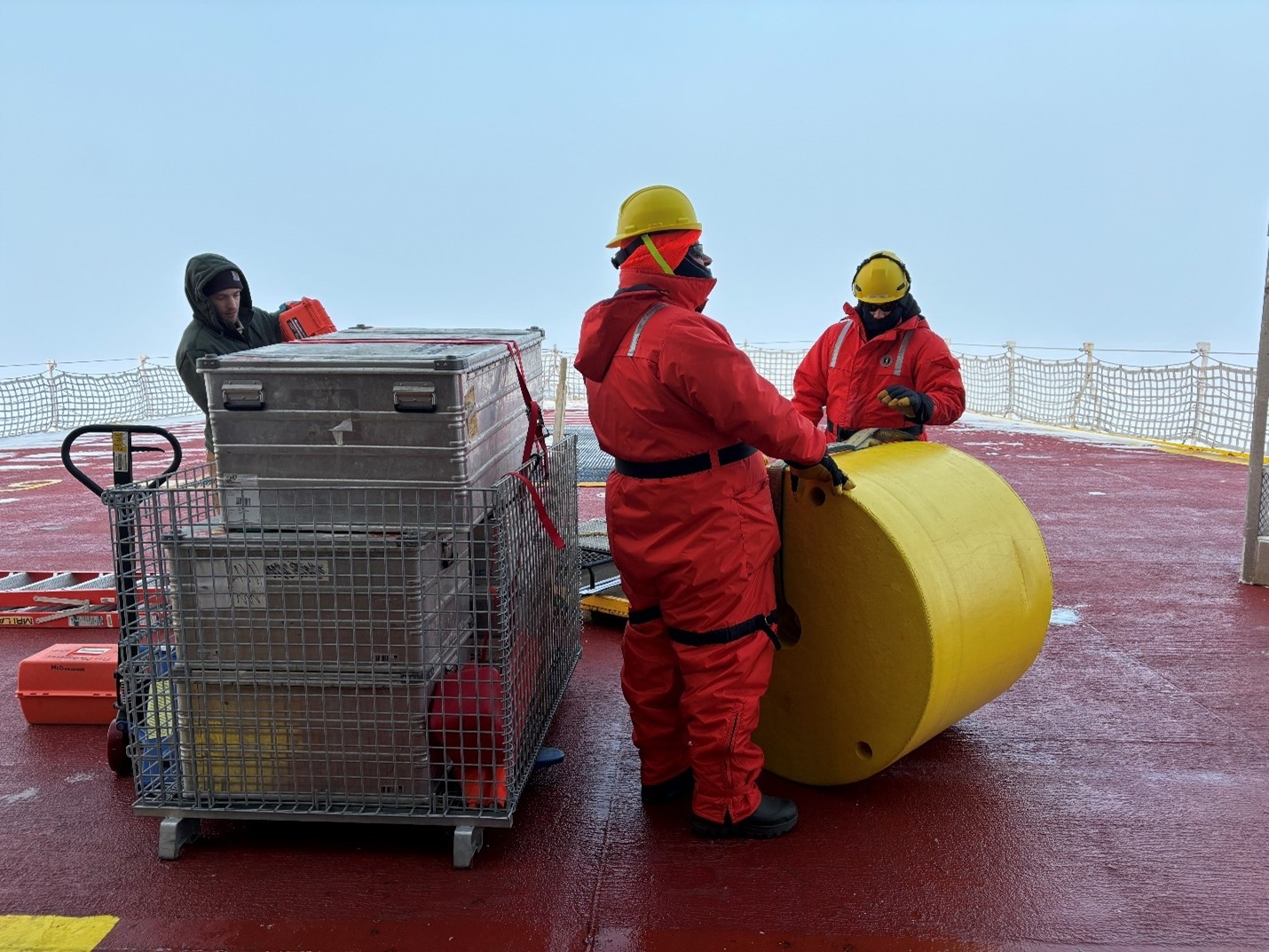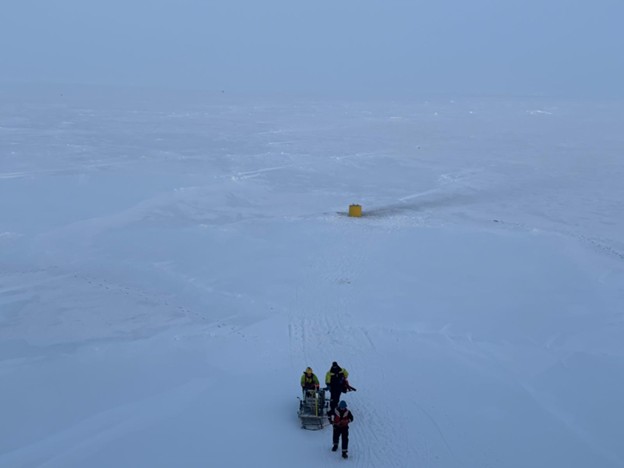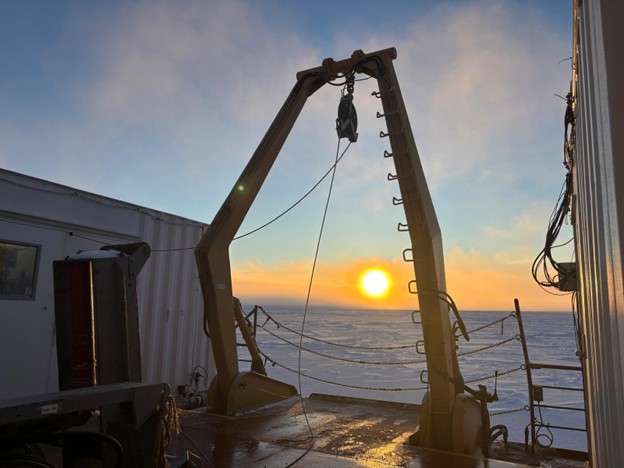Dispatch 17: TOP Deployment
Jennifer Kosty (Yale University)
October 5, 2025
18:00 local, 79.02◦N, 146.47◦W
Conditions:
- Cloudy
- 90% sea ice cover
- -8.5◦C
- Sunrise: 5-Oct-2025 11:03
- Sunset: 5-Oct-2025 20:02
- Day length: 8 hours, 59 minutes
We arrived at CB-11 around 12:30 am, and the night watch completed a 3800 m CTD rosette cast. Strong winds and cold temperatures have prevented us from collecting zooplankton samples at the past few science stations, because it would be unsafe to deploy the Bongo sampling nets. Thankfully, the weather conditions allowed us to collect samples at CB-11, although we still faced issues with the samples freezing before they could be processed.
After the cast at CB-11, we continued to search for ice floes that were sufficiently large and thick for our planned ice work. Ice specialist Kyle McDougall worked with Captain Briggs, co-chief scientist Paul Macoun, and WHOI engineer Jeff O’Brien to identify several potential floes located nearby. However, we were disappointed to discover that these floes consisted primarily of thin first year ice, with only small patches of thick multi-year ice.
Around 3:00 pm, we decided to send a small team out to one of the thicker ice patches to deploy a TOP buoy. Jeff O’Brien, Cory Beatty, Jim Ryder, and Tim McDonough were lowered down to the ice floe, where they worked with several members of the ship’s crew to deploy the TOP. The deployment team was accompanied by two guards who were on the lookout for polar bears. We were on high alert for bears in the area given our encounter yesterday and the brief spotting of a mother bear and cubs late last night. The TOP deployment was a success, and everyone was safely back on board just before sundown at 8:00 pm.
Afterwards, the day watch completed a CTD rosette cast, which will be used to verify that the TOP’s sensors are operating properly. Tonight, we continue our search for a sufficiently large and thick ice floe for more upcoming ice work!
